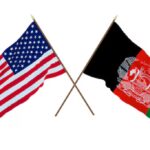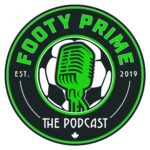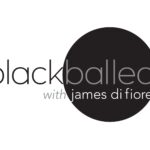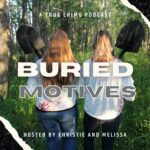
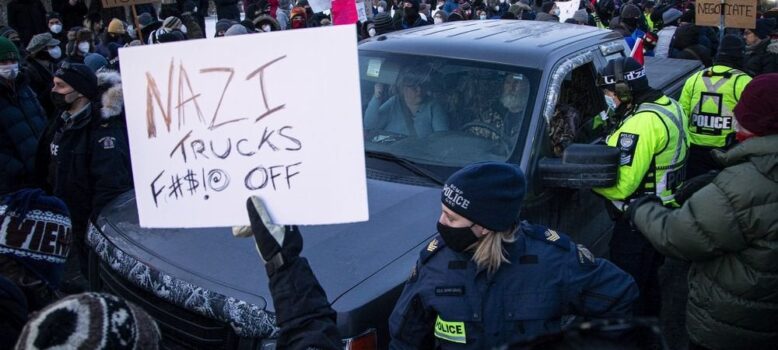
Justin Trudeau’s use of the Emergencies Act to inflict a 2022 St. Valentine’s Day massacre on the trucker insurrection received a clear passing grade from the Rouleau Commission.
The appellate judge assessed that Trudeau was justified in smacking down the “Freedom Convoy,” a fringe group of immature losers who threw a temper tantrum along a 4,000-mile ribbon of the country for almost a month in February of last year.
The sorry episode might have taken Trudeau back to his days as a teacher of high school math scolding a Breakfast Club full of truants because the Rouleau analysis in some sections reads more like a report card from a displeased teacher.

Illegitimately declaring an insurrection was bad enough. Composing the revolutionary screed in Grade 7 English was worse.
The result was the “class presentation” in Ottawa and 29 other dunce confederacies was deemed worthy of corporal punishment by the Liberal/NDP coalition, leaving the Pierre Poilievre-led convoyists with a failing grade in Social Studies and Government, Grandmaster Trudeau delivering the figurative strap on the strength of having won the past election.

The schoolboy infractions of the protesters mushroomed into a national emergency or, as set out in the EA, “an urgent and critical situation of a temporary nature that seriously endangered the lives, health or safety of Canadians.”
The analysis of the Feb. 14, 2022 invocation of the Emergencies Act by Justin Trudeau offers readers an inside look at some of the small-minded, devious, conniving and ultimately neurotic actors who took the stage at Crazy Convoy venues at the capital and various other critical border points of entry during the pointless trucker protests.

Justice Rouleau’s 2,000-page report catalogues demonstrations at roughly 30 locations across the formerly Peaceable Kingdom, (but reserves its more noteworthy observations for the occupation’s three major attack points: Ottawa, Windsor and Coutts, AB).
The empty protest might have accomplished more if not for the size of the country itself.
Consider these 30 snapshots of the 30-site frontal attack on Canada’s liberal democracy:
🚚 On Feb. 3, an Alberta MLA tried to convince organizers to reopen one lane of traffic at Coutts. They were about to agree until Calgary’s Artur Pawlowski, an overbearing street preacher who answers only to his god, delivered a fire and brimstone sermon at the Convoy’s local hangout, the Coutts’ Smuggler’s Saloon, and persuaded the deplorables to dig in for god and fascism, solution stymied.

(For inciting people at the border crossing, Pawlowski is charged with breaching a release order and mischief over $5,000, and contravention of the Critical Infrastructure Defence Act.)
🚚 Alberta RCMP obtained a wiretap authorization and subsequent search warrant on the same Smuggler’s Saloon/Convoy Clubhouse, as well as at a motorhome and two trailers, seizing 13 long guns, two handguns, two sets of body armour, a machete, a large quantity of ammunition, and high-capacity magazines. One of the pieces of body armour had patches that depicted the symbol of Diagolon, the alleged extremist organization.

🚚 The police arrested 12 individuals during the execution of the warrants at Coutts. Later that day, they arrested a 13th person who had been travelling from Calgary to Coutts while allegedly in possession of two additional firearms.

🚚 On Feb. 3, an individual was criminally charged for uttering threats against Ottawa Mayor Jim Watson. The same individual was alleged to have made a death threat against Ottawa Police Services Chief Peter Sloly, Ottawa Department of Emergency and Ottawa Police Services Board Chair Diane Deans and her staff. Two city councillors also received threats.
🚚 Feb. 7, a relative of a convoy participant tipped off the Windsor Police Service (WPS) that protesters were planning to shut down the Ambassador Bridge. However, the WPS could not conduct an enforcement operation because the number of personal vehicles in the convoy made it difficult to determine who was a protester and who was a motorist.
🚚 Ottawa residents saw symbols of hate in their community, including swastikas and Confederate flags. As at Coutts, present was the flag of Diagolon, a group created by online personality Jeremy Mackenzie, who was in Ottawa with other cult members during the first weekend of the protests.

🚚 Feb. 4, RCMP’s commanding officer of K Division (Alberta), signed a request for assistance to the Canadian Armed Forces for access to heavy towing capacity. The military did not have the equipment that would be suitable for use at Coutts.
🚚 When the Ambassador Bridge was blocked, much of the commercial traffic was re-routed to the three other crossings: the Blue Water Bridge in Sarnia, the Peace Bridge in Fort Erie, and the Queenston Lewiston Bridge in Queenston. The Blue Water Bridge and Peace Bridge points of entry were subjected to disruptive protests as organizers collaborated and coordinated for maximum effect.

🚚 City services in Ottawa were seriously disrupted, including access to City Hall, local libraries, COVID-19 vaccination clinics, snow removal operations, community and social services and public transit.
🚚 Downtown Ottawa businesses were affected, with many closing in response to the protests. By some estimates, lost business revenue and lost wages totalled between $150 million and $210 million.
🚚 Traffic disruption meant the Children’s Hospital of Eastern Ontario (CHEO) reported cancer patients had difficulty accessing treatment. Witnesses described a general state of lawlessness in the downtown area.
🚚 Ottawa’s 911 services were overwhelmed. In addition to a higher than usual number of legitimate calls, there were also many false 911 calls intended to disrupt the system. There were credible reports of residents feeling threatened and harassed by protesters.
🚚 The OPS’s planning challenges were compounded by a general breakdown of command and control highlighted by the fact there were four different incident/event commanders over the protest’s duration.

🚚 Feb. 7, Ottawa council debated a motion for the City to enter into discussions with the federal minister of Public Safety to determine whether the Emergencies Act could be invoked at that time. The motion failed on a 12 to 12 vote.
🚚 During the first week, Ottawa legal staff contemplated obtaining an injunction against the protesters, asking OPS about the type of injunction it would need respond to the protests. It found it difficult to get a clear answer. Ottawa’s city solicitor concluded that the OPS had lost interest in an injunction. “It seems that the City took the position that it would only seek an injunction if the OPS said it needed one,” said Rouleau.
🚚 On Feb. 7, OPSB’s Deans, Watson, and Chief Sloly made the request for 1,800 officers public, said a blunt judge, “for political purposes.”
Making the request public risked revealing the OPS’s strategic and operational thinking, he charged.
“The request signalled that the OPS was preparing for a mass mobilization of resources to attempt to remove protesters. That created the possibility that protesters could plan a strategic response.
“In fairness, the February 7 request was not the only time when political actors disclosed staffing information, arguably for political purposes. Ontario Solicitor General Jones stated that more than 1,500 OPP officers had been on the ground in Ottawa from the beginning of the protest. In reality, the OPP had contributed a cumulative 1,500 OPP officer shifts.”

🚚 By the third weekend of protests, residents’ frustrations were reaching a boiling point. This frustration culminated on Feb. 13 in “The Battle of Billings Bridge,” a counter-protest organized to prevent another convoy from barging into the downtown core, a watershed moment as the community took action. (The federal government had a different take, concerned that counter-protests would become more frequent and would increase the possibility of violence).

🚚 A Feb. 13 protest at the Cornwall, ON port of entry risked cutting off the Akwesasne Mohawk community that lives on Cornwall Island from the rest of Canada.
🚚 There were concerns about blockades of a rail crossing and disruptions at the Port of Halifax, neither of which occurred.
🚚 The Convoy campaign hosted on GoFundMe had 133,836 donors. Approximately 107,000 donations originated in Canada (86 per cent), 14,000 from the United States (11 per cent), and 4,000 from 80 other countries (3 per cent). It raised approximately $10,060,000 before it was shut down, with $9 million from Canada (89 per cent), $870,000 originated from the U.S. (9 per cent), and $190,000 from 80 other countries (2 per cent).
🚚 Email money transfer donations totalling $419,416.63 were made to the Convoy campaign. There were approximately 3,000 transfers, all of which originated from Canadian-domiciled financial institutions.
🚚 The “HonkHonk Hodl” fundraiser raised approximately 21 Bitcoin. On Feb. 16, 14.4048 Bitcoin was distributed into 100 wallets, each containing the equivalent of $8,019.43 (or $801,943 in total at the time) each containing unique instructions on how to access one wallet, to truckers in Ottawa. Of the 100 wallets that were distributed, 40 remained untouched as of early November 2022.
🚚 Feb. 13, in an urgent, late evening conference call to the premiers, the PM explained the threshold for declaring a public order emergency and then outlined the measures that the government was contemplating. BC, YT, NWT, ON and NF supported the invocation of the Act. The premier of Nunavut was more neutral. The premiers of QC, NB, and NS emphasized that the situation was under control in their provinces and that the act should not apply there. Both NS and and PEI voiced their concern that tensions could be inflamed by federal action.

🚚 The premiers of AB, SK and MB voiced the strongest reservations, contending the situation was under control in their provinces, that using the act could inflame tensions, and that governments had other means to respond, such as yielding to the protesters by lifting public health measures.
🚚 The Prime Minister was asked at the hearing what it would have taken to convince him not to invoke the Emergencies Act. He said that he would have had to hear from the premiers that they had a solution that would not require the use of the act; no such solution was offered.
🚚 The federal government said the economic impact to date of the protests was estimated at approximately 0.1 per cent of Canada’s gross domestic product per week.
🚚 On Feb. 14, OPSB Chair Deans, learning that CBC/Radio-Canada would be releasing a critical piece about OPS Chief Sloly, asked Sloly whether he had a serious interest in resigning. Chief Sloly interpreted this as the OPSB chair pressuring him to resign, which he did the next morning.
🚚 Private residents were subjected to harassment, particularly those who wore masks in public; some protesters attempted to remove residents’ masks, resulting in physical altercations.
🚚 On the ability to exclude trucks from the downtown core, Rouleau saw evidence that the OPS lacked a clear understanding of the powers its officers had at common law, by statute, or through the invocation of provincial emergency legislation. “The lack of understanding of police common law powers was particularly problematic,” he said.
🚚 Rouleau heard evidence of homophobic and transphobic slurs being directed at residents, and of racialized residents feeling targeted. Some individuals who lived in the area were too afraid to leave their homes. Vulnerable residents were particularly affected. These fears were compounded by the seeming inability of the police to protect the public and preserve law and order.
🚚 The evening of February 7, WPS officers engaged with protesters who had undoubtedly contravened the Education Act when they parked their vehicles at Assumption High School. The WPS had two tow trucks ready to assist in removing the vehicles when the protesters became confrontational, threatening violence with tire irons, jamming the towing company’s phone lines, and threatening to attend the tow yard.

-30-
Robert Lee
Meet Robert. He is a former veteran news reporter/magazine editor incensed at how the North American media props up buffoons like Trump & Ford. Time to put "comfort the afflicted and afflict the comfortable" back into the newsroom's Mission Statement.

